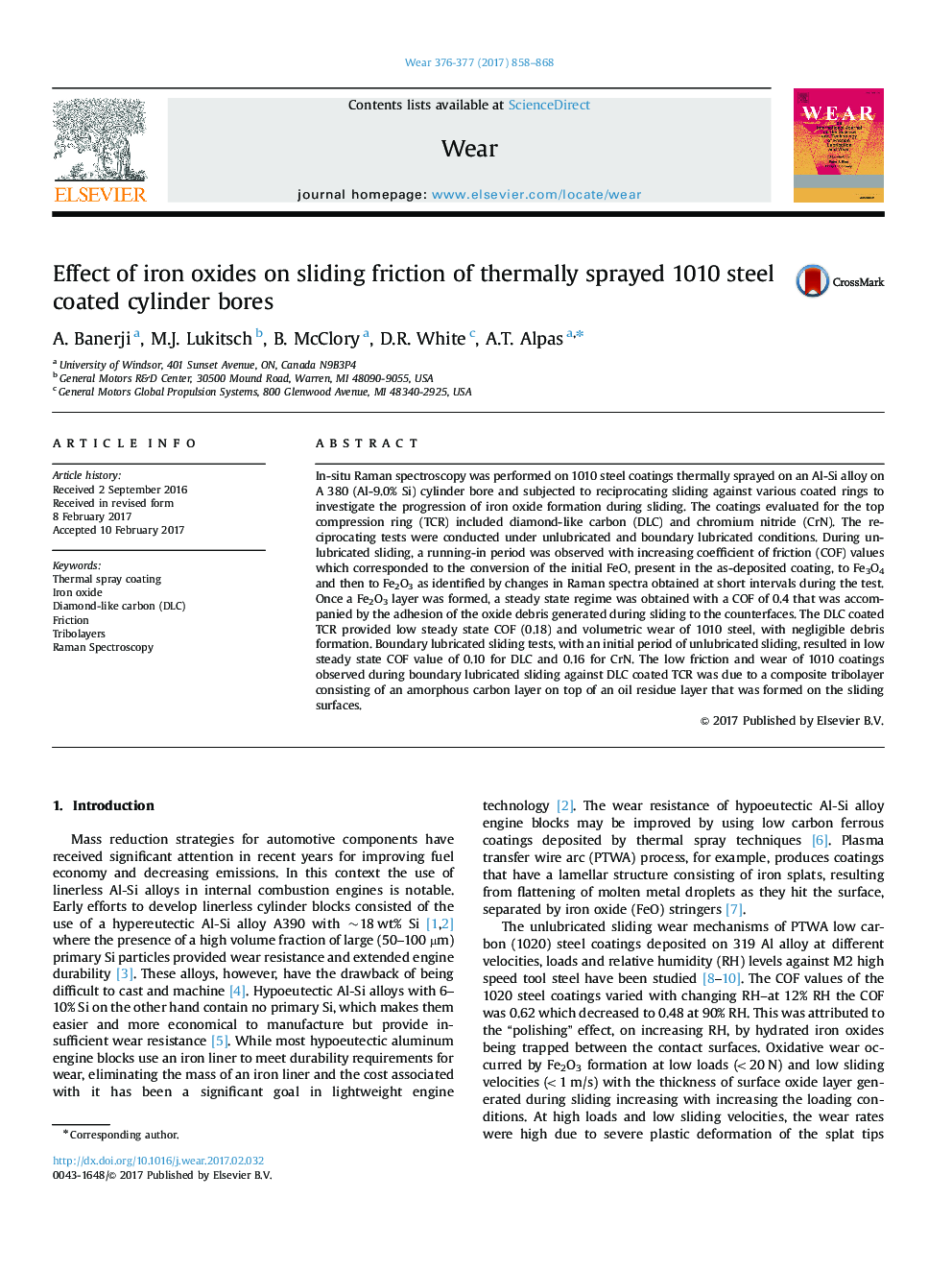| Article ID | Journal | Published Year | Pages | File Type |
|---|---|---|---|---|
| 4986757 | Wear | 2017 | 11 Pages |
Abstract
In-situ Raman spectroscopy was performed on 1010 steel coatings thermally sprayed on an Al-Si alloy on A 380 (Al-9.0% Si) cylinder bore and subjected to reciprocating sliding against various coated rings to investigate the progression of iron oxide formation during sliding. The coatings evaluated for the top compression ring (TCR) included diamond-like carbon (DLC) and chromium nitride (CrN). The reciprocating tests were conducted under unlubricated and boundary lubricated conditions. During unlubricated sliding, a running-in period was observed with increasing coefficient of friction (COF) values which corresponded to the conversion of the initial FeO, present in the as-deposited coating, to Fe3O4 and then to Fe2O3 as identified by changes in Raman spectra obtained at short intervals during the test. Once a Fe2O3 layer was formed, a steady state regime was obtained with a COF of 0.4 that was accompanied by the adhesion of the oxide debris generated during sliding to the counterfaces. The DLC coated TCR provided low steady state COF (0.18) and volumetric wear of 1010 steel, with negligible debris formation. Boundary lubricated sliding tests, with an initial period of unlubricated sliding, resulted in low steady state COF value of 0.10 for DLC and 0.16 for CrN. The low friction and wear of 1010 coatings observed during boundary lubricated sliding against DLC coated TCR was due to a composite tribolayer consisting of an amorphous carbon layer on top of an oil residue layer that was formed on the sliding surfaces.
Related Topics
Physical Sciences and Engineering
Chemical Engineering
Colloid and Surface Chemistry
Authors
A. Banerji, M.J. Lukitsch, B. McClory, D.R. White, A.T. Alpas,
